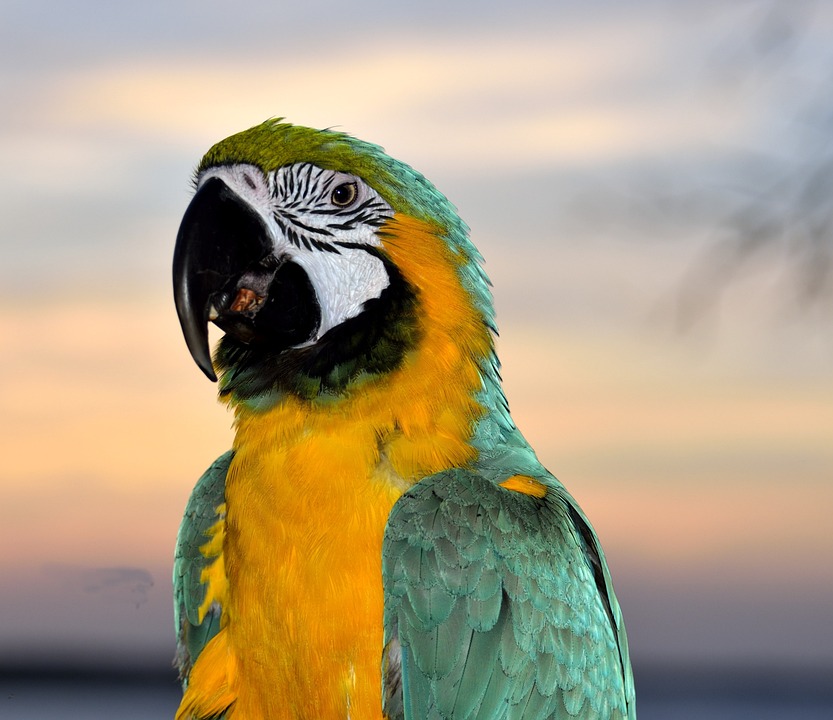Parrots are highly intelligent and active creatures that require mental and physical stimulation to thrive. Providing them with appropriate climbing structures is not only essential for their well-being but also plays a crucial role in shaping their behavior. In this article, we will delve into the fascinating world of parrot behavior and explore how different climbing structures can impact their response. Whether you are a new parrot owner or a seasoned enthusiast, understanding these dynamics will help you create a stimulating environment for your feathered friend.
The Importance of Climbing Structures for Parrots
Parrots, in their natural habitat, spend a significant amount of time climbing trees, branches, and exploring their surroundings. Mimicking this environment in captivity is vital for their physical exercise and mental enrichment. Climbing structures not only provide an outlet for their innate climbing instincts but also offer opportunities for play, exploration, and social interaction.
Different Types of Climbing Structures
When it comes to choosing climbing structures for your parrot, there are various options to consider. Each type of structure offers unique benefits and engages different aspects of your parrot’s behavior. Let’s take a closer look at some popular climbing structures:
1. Tree Branch Perches: These natural perches simulate the experience of climbing trees in the wild. The uneven texture and varying diameters of tree branches help exercise your parrot’s feet and promote healthy foot muscles. Tree branch perches also provide a sense of security, as parrots can grip onto them more securely than smooth perches.
2. Rope and Ladder Perches: Rope and ladder perches offer a dynamic climbing experience for parrots. The varying textures and heights engage their natural instincts to explore and conquer obstacles. These structures provide mental and physical stimulation, as parrots can swing, climb, and navigate through the ropes or ladder rungs.
3. Play Gyms: Play gyms are multi-level structures that combine perches, ladders, swings, and toys. They offer a diverse range of climbing options in a compact space, making them ideal for parrots with limited cage or room space. Play gyms stimulate various behaviors, including climbing, swinging, foraging, and social interaction.
4. Climbing Nets: Climbing nets are excellent additions to large parrot enclosures or aviaries. They mimic the experience of climbing through foliage and can be adjusted to different heights and angles. Climbing nets encourage exploration, balance, and coordination, providing a challenging yet rewarding climbing experience for your parrot.
How Different Climbing Structures Impact Parrot Behavior
The choice of climbing structure can significantly influence your parrot’s behavior and overall well-being. Here are some ways different climbing structures impact parrot behavior:
1. Physical Exercise: Climbing structures promote physical exercise by engaging your parrot’s muscles and encouraging movement. Parrots that have access to a variety of climbing structures tend to be more active and exhibit healthier physical attributes.
2. Mental Stimulation: Climbing structures offer mental stimulation by providing opportunities for exploration, problem-solving, and play. Parrots that have access to diverse climbing options are less likely to exhibit behavioral problems associated with boredom or lack of mental stimulation.
3. Social Interaction: Certain climbing structures, such as play gyms, encourage social interaction among parrots. These structures create a shared space where parrots can engage in playful interactions, strengthen bonds, and practice social behaviors.
4. Emotional Well-being: Climbing structures can have a positive impact on your parrot’s emotional well-being. By replicating their natural habitat, climbing structures help reduce stress, anxiety, and frustration, leading to a happier and more content parrot.
FAQs about Parrot Behavior and Climbing Structures
1. How many climbing structures should I provide for my parrot?
Ideally, you should provide a minimum of three different climbing structures for your parrot. This variety ensures that your parrot has options for different climbing experiences and prevents them from getting bored.
2. Can I rotate the climbing structures to keep my parrot engaged?
Yes, rotating climbing structures every few weeks can help maintain your parrot’s interest and prevent them from becoming habituated to a particular structure.
3. My parrot seems hesitant to try new climbing structures. What should I do?
Introduce new climbing structures gradually and provide positive reinforcement when your parrot shows interest or interacts with them. Patience and persistence will help your parrot become more comfortable and confident in exploring new structures.
4. Are there any climbing structures I should avoid for my parrot?
Avoid using structures with toxic materials, sharp edges, or small parts that can be swallowed. Additionally, ensure that the climbing structures are appropriately sized and suitable for your parrot’s species and size.
In conclusion, understanding parrot behavior and the impact of different climbing structures is crucial for providing a stimulating and enriching environment for your feathered companion. By incorporating a variety of climbing structures, you can promote physical exercise, mental stimulation, social interaction, and emotional well-being in your parrot. Remember to choose structures that are safe, suitable for your parrot’s species, and rotate them periodically to keep the experience fresh and engaging. Happy climbing!









